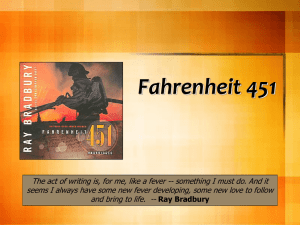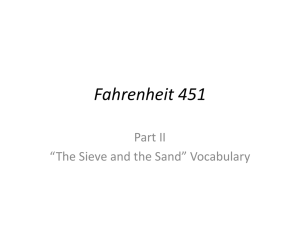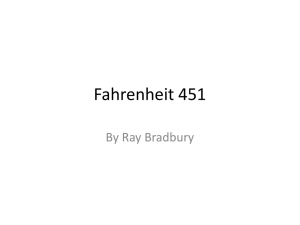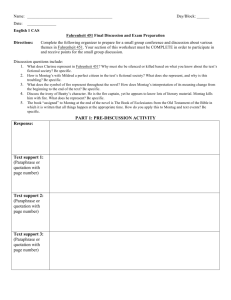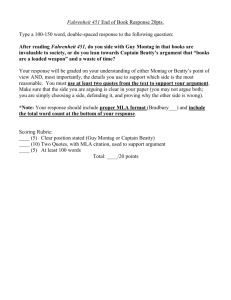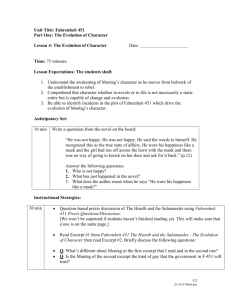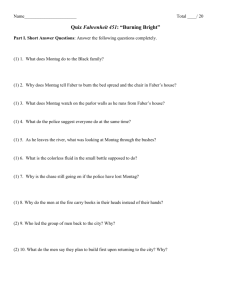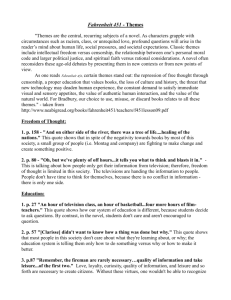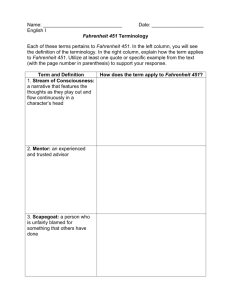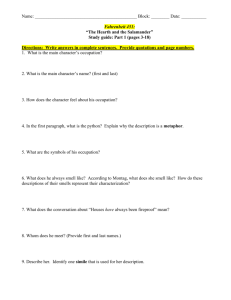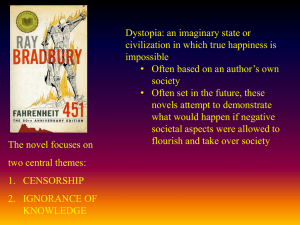background information (handout)
advertisement
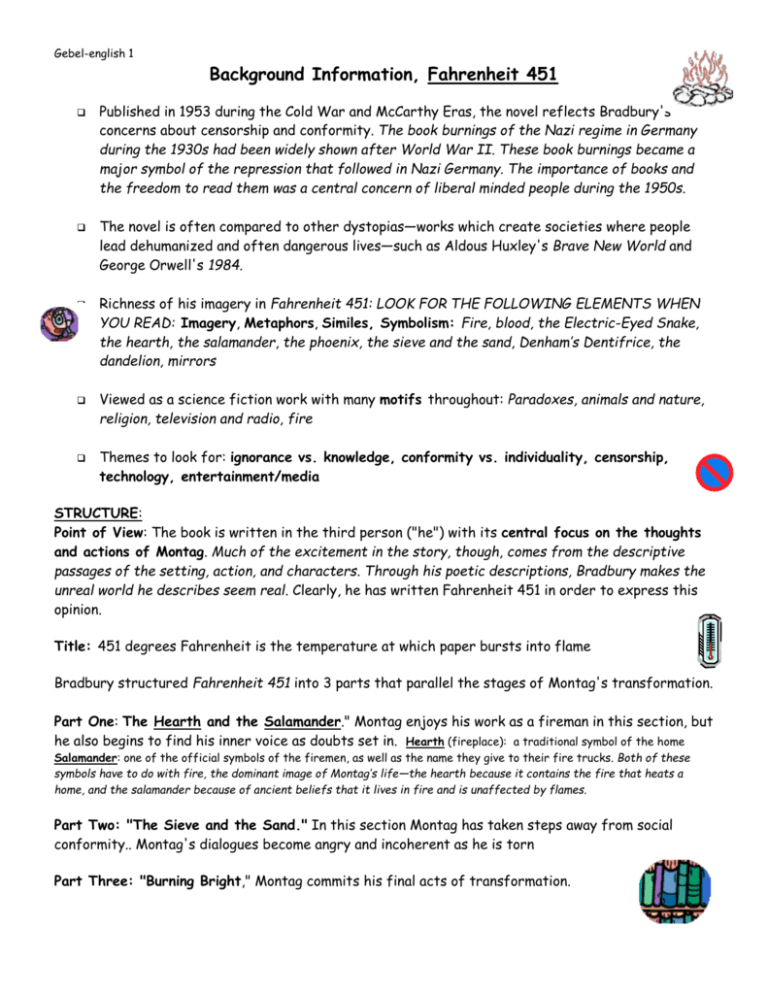
Gebel-english 1 Background Information, Fahrenheit 451 Published in 1953 during the Cold War and McCarthy Eras, the novel reflects Bradbury's concerns about censorship and conformity. The book burnings of the Nazi regime in Germany during the 1930s had been widely shown after World War II. These book burnings became a major symbol of the repression that followed in Nazi Germany. The importance of books and the freedom to read them was a central concern of liberal minded people during the 1950s. The novel is often compared to other dystopias—works which create societies where people lead dehumanized and often dangerous lives—such as Aldous Huxley's Brave New World and George Orwell's 1984. Richness of his imagery in Fahrenheit 451: LOOK FOR THE FOLLOWING ELEMENTS WHEN YOU READ: Imagery, Metaphors, Similes, Symbolism: Fire, blood, the Electric-Eyed Snake, the hearth, the salamander, the phoenix, the sieve and the sand, Denham’s Dentifrice, the dandelion, mirrors Viewed as a science fiction work with many motifs throughout: Paradoxes, animals and nature, religion, television and radio, fire Themes to look for: ignorance vs. knowledge, conformity vs. individuality, censorship, technology, entertainment/media STRUCTURE: Point of View: The book is written in the third person ("he") with its central focus on the thoughts and actions of Montag. Much of the excitement in the story, though, comes from the descriptive passages of the setting, action, and characters. Through his poetic descriptions, Bradbury makes the unreal world he describes seem real. Clearly, he has written Fahrenheit 451 in order to express this opinion. Title: 451 degrees Fahrenheit is the temperature at which paper bursts into flame Bradbury structured Fahrenheit 451 into 3 parts that parallel the stages of Montag's transformation. Part One: The Hearth and the Salamander." Montag enjoys his work as a fireman in this section, but he also begins to find his inner voice as doubts set in. Hearth (fireplace): a traditional symbol of the home Salamander: one of the official symbols of the firemen, as well as the name they give to their fire trucks. Both of these symbols have to do with fire, the dominant image of Montag’s life—the hearth because it contains the fire that heats a home, and the salamander because of ancient beliefs that it lives in fire and is unaffected by flames. Part Two: "The Sieve and the Sand." In this section Montag has taken steps away from social conformity.. Montag's dialogues become angry and incoherent as he is torn Part Three: "Burning Bright," Montag commits his final acts of transformation.
